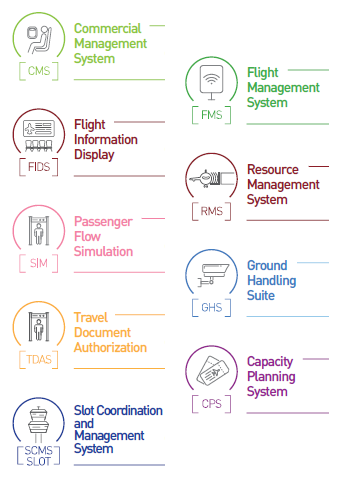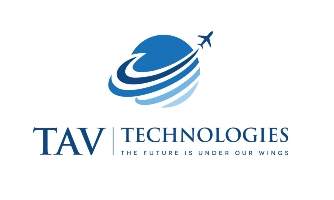
Airport operations are sophisticated and costly, with modern technology creating complex environments for both passengers and staff. This has made operational efficiency and passenger experience crucial.
Automation has been a key development for various processes and is already in use across airports, particularly for passenger interactions. It has served the demand for higher efficiency and seamless passenger experience with smart solutions and innovative approaches such as collaborative decision-making (CDM), resource optimisation, self-service systems and mobile platforms.
TAV Technologies chief technology officer (CTO) Onder Gogebakan spoke to us about the company’s next-generation airport management solution, the Total Airport Management Suite (TAMS), a complete integrated system for handling airport operations.
The modern aviation industry needs integrated systems that enable airport managers to make the best use of their resources, as well as abilities gained through digitalisation.
“As we all know, the Covid-19 pandemic tremendously affected aviation, and clearly, this new standard will require even more automation and digitalisation at airports,” Gogebakan added.
How a complete management solution can help airports
TAMS is an integrated system featuring solutions, including CDM, flight management, resource allocations, capacity planning and commercial management.
The system uses modern digital technologies such as flight delay predictions for resource allocations, which can quickly provide robust resource planning required for reactive real-time actions. Automation features can handle operational tasks with a particular algorithm and ruleset, minimising human error and the task load for operators. It only allows users to intervene in situations where judgement is necessary.
“It’s a multi-airport system,” says Gogebakan. “TAMS can serve several airports with a single implementation, and airports links through TAMS can share and process data collaboratively.”

Collaborative decision-making is essential for the efficiency of airport operations. Information sharing and transparency are fundamental factors in collaborative decision-making as long as the confidentiality of sensitive data are maintained.
TAMS provides all functionalities for the airport collaborative decision-making (A-CDM) approach, as well as extensive monitoring capabilities for CDM milestones. The system ensures constant collaboration and consistency throughout the complete operations process as a central solution for airport operation stakeholders.
In addition, TAMS can further contribute to the collaboration of airports in multi-airport implementations. All software products have a common language and are consolidated with real-time feedback, making operational optimisation more efficient across locations.
TAMS operates as the centre of airport operations, collecting information across systems to show users the most reliable data. It can process data from any source and display the most reliable source for each attribute by using advanced prioritisation techniques embedded in the system.
“TAMS also employs data for the benefit of the operation,” explains Gogebakan. “The main prediction algorithm of TAMS is continuously fed with the most up-to-date data, and the algorithm continually improves with high precision.”
Easy system integration across airports
There are a number of benefits to deploying the complete TAMS solution compared to individual programmes within the aviation industry.
Learning how to operate a variety of tools with different structures and interfaces can be challenging and cause friction for staff. TAMS minimises this friction, and offers training as a single platform.
“This system provides flexibility in operational dashboard such that different functional groups can arrange their dashboards as needed to fulfil their responsibilities,” explains Gogebakan.
System integration requirements are also minimised. With all data collected in TAMS, data clutter is eliminated. TAMS has plug-and-play technologies and advanced configuration capabilities, which are designed to make it easy to implement in airports that have different requirements, as well as adapt it to changing conditions.
User Experience (UX) has become the core competency factor in end-user performance, and TAMS has been designed to offer the best UX possible to the operators. They can carry out all the tasks and monitor operational KPIs with user-friendly dashboards.
“Advanced technologies will be even more essential to avoid crowds in airports,” explains Gogebakan. “TAMS can help distribute the passenger load evenly in the airport, support operations to meet new KPIs, and handle Covid-19 related risks in the coming days.”
Developing TAMS for the future needs of airports
While it is a brand new product, there are plans to keep developing the solution in the future. The advanced system is easy to implement with new features, which ensures that airports will always have access to the latest technology.
“We will be adding staff rostering and passenger flow system capabilities in TAMS,” highlights Gogebakan. “Staff rostering module will offer all the features that airport companies need to plan their shifts and to determine the required skill set of their employees for the future.”
The passenger flow system will use historical data and live data coming from sources such as heat maps and flight data updates. It will also simulate how passengers flow at the airport.
This system can help airports plan their resources to avoid congestion, and recommend the number of resources such as security lanes and passport checkpoints, that should be open to keep the waiting time or queue length below the required thresholds. These systems will be essential for airports in the years to come.
TAV Technologies has already received positive feedback, showing that it is the future of airport operations. The advanced technology of TAMS ensures the system will stay up-to-date with easy implementation of new features, ensuring it can be the centre of airport operations.



